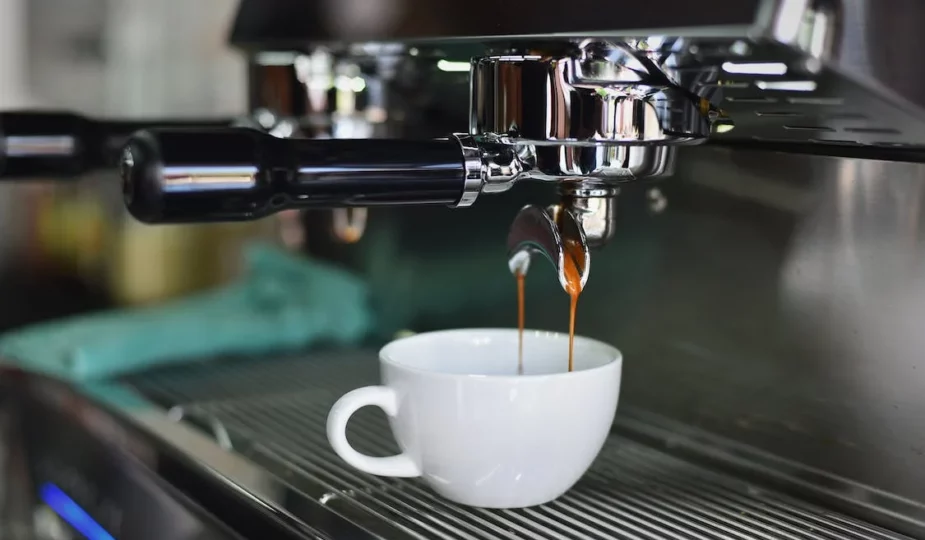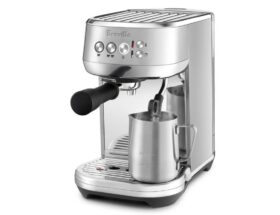
How to Espresso: Italy’s Coffee Culture
If you’re seeking for a destination that has mastered the art of brewing authentic espresso, Italy is a top contender. Beloved by locals and tourists alike, Italy’s coffee culture is not just a morning routine, it is a tradition steeped in rich history and artistry. Journey with us as we traverse the stunning Italian landscape from coast to coast, ranking the nation’s most delightful offerings in coffee consumption.
Table of Contents
- The Intriguing History of Italian Coffee Culture
- An Interesting Italian Espresso Coffee Fact to Ponder
- The Essential Equipment for Perfect Italian Espresso
- List of Essential Equipment:
- Step by Step: Crafting the Perfect Italian Espresso
- Frequently Asked Questions
- 1. What makes Italian Espresso culture unique?
- 2. What is the most popular coffee in Italy?
- 3. How do Italians typically enjoy their coffee?
- 4. What are some unique Italian Espresso traditions?
- 5. Can I find Italian-style coffee outside of Italy?
- 6. How does Italian coffee compare to American coffee?
- 7. What are some other popular coffee drinks in Italy?
- 8. Is it true that Italians only drink coffee at certain times of the day?
- 9. Why is espresso so popular in Italy?
- 10. How should I order Italian Espresso in Italy?
- Conclusion
The Intriguing History of Italian Coffee Culture
The history of coffee in Italy teems with captivating tales and fascinating facts. One such fact is that coffee was introduced to Italy around the year 1570, thanks to an influential Venetian merchant named Alvise da Cadamosto.
It is also noteworthy to reveal that “Espresso,” the much-acclaimed form of coffee, was born in Italy. In the beginning, espresso was not well-received by the population because of its strong flavour. However, over time, Italians began to create variations of espresso, leading to the scrumptious coffee drinks we enjoy today.
An Interesting Italian Espresso Coffee Fact to Ponder
Did you know that the towering city of Milan gave birth to the concept of “coffee break”? It is said that the espresso machine was invented in Milan to offer workers a quick, necessitated break without hindering productivity. This demonstrates how Italian coffee culture is not merely about great tasting coffee but also about facilitating social interaction and promoting efficiency. Next time you sip on an espresso shot, remember its Italian roots and the story behind it!
The Essential Equipment for Perfect Italian Espresso
Whether you’re a coffee connoisseur or a novice, brewing the perfect cup of Italian espresso can seem like a daunting task. However, with the right equipment, you can bring the flavors of Italy’s coffee culture right into your kitchen. Let’s dive into the must-have items you’ll need to create your Espresso Euphoria!
1. Espresso Machine
The heart and soul of any espresso brewing process is, of course, the espresso machine. These come in a variety of styles, sizes, and price ranges, but all serve the same basic function: to force hot water through tightly packed, finely ground coffee.
2. Coffee Grinder
For the freshest flavor, you’ll want to grind your coffee beans immediately before brewing. This is where a quality coffee grinder comes in. Choose a burr grinder for a consistent grind, which is essential for a perfect espresso.
3. Tamper
A tamper is used to press the coffee grounds into the espresso machine’s portafilter. The right pressure is crucial to extract the full flavor of the coffee and achieve a smooth, rich espresso.
4. Milk Frother
If you’re a fan of cappuccinos or lattes, a milk frother is a must. This device whips hot milk into a creamy froth that can be poured over your freshly brewed espresso.
5. High-Quality Coffee Beans
Of course, the most important component of a great espresso is the coffee itself. Opt for high-quality, fresh beans for the best flavor. Italian roast beans are particularly well-suited to espresso brewing.
List of Essential Equipment:
- Espresso Machine
- Coffee Grinder
- Tamper
- Milk Frother
- High-Quality Coffee Beans
With these essential tools in your kitchen, you’re well on your way to experiencing the rich and robust flavors of Italy’s coffee culture. So, go ahead and brew a cup of Espresso Euphoria!
Step by Step: Crafting the Perfect Italian Espresso
If you’re new to the world of Italian coffee, allow us to guide you through the process of making a classic Italian espresso. Here’s a detailed step-by-step guide:
Select the Right Beans
Italian espresso calls for a dark roast, so choose beans that are labeled ‘Espresso Roast’ or ‘Dark Roast’.
Grind Your Coffee Beans
The grind should be fine but not too powdery. The consistency should be similar to table salt.
Measure the Right Amount
For a single shot of espresso, measure about 7-9 grams of ground coffee. For a double shot, use 14-18 grams.
Prepare Your Espresso Machine
Ensure the portafilter is clean, dry and warm. Fill it with your measured coffee grounds and tamp down firmly.
Extract the Espresso
Attach the portafilter to the machine and start the extraction process. The perfect shot of espresso should take about 20-30 seconds to brew.
Serve Immediately
Italian tradition dictates that espresso should be enjoyed immediately, while it’s hot and fresh.
With these steps, you can emulate the Italian coffee culture right from your kitchen. Now, all you need to do is sit back and enjoy the rich, robust flavors of your homemade espresso!
Frequently Asked Questions
1. What makes Italian Espresso culture unique?
Italian coffee culture is steeped in years of tradition, uniting communities with its distinct rituals and social norms. From the vibrant espresso bars that line the streets of Rome to the humble family-owned cafes in the heart of Florence, coffee is more than just a beverage; it’s a way of life. The unique coffee culture in Italy stems from a deep appreciation for quality and craftsmanship, as well as the communal aspect of sharing a cup of coffee with friends and family.
2. What is the most popular coffee in Italy?
Espresso reigns supreme in Italy’s coffee culture. It’s a rich, concentrated form of coffee served in “shots.” The popularity of espresso in Italy is unrivaled, with many Italians enjoying multiple espressos throughout the day. Whether consumed at a bustling city café or a quiet countryside coffee shop, espresso is the beating heart of Italy’s coffee scene.
3. How do Italians typically enjoy their coffee?
Italians typically enjoy their coffee standing at the bar, often with a pastry on the side. It’s a quick, energizing ritual that starts in the morning and continues intermittently throughout the day. Unlike many other cultures, Italians rarely take their coffee to-go. Instead, they savor each sip, often engaging in lively conversation with fellow coffee drinkers.
4. What are some unique Italian Espresso traditions?
There are several unique traditions that underscore the importance of coffee in Italian culture. One such tradition is the “caffè sospeso,” or “suspended coffee,” where customers pay for an extra coffee as an anonymous act of charity. Another tradition is the strict adherence to the “no cappuccino after 11 a.m.” rule, as Italians believe milk can interfere with digestion.
5. Can I find Italian-style coffee outside of Italy?
Yes, Italian-style coffee has permeated international borders, and you can now find authentic Italian coffee experiences worldwide. From the artisanal coffee shops of New York to the fashionable cafes of Melbourne, the Italian coffee culture has influenced coffee scenes around the globe. However, nothing compares to savoring a freshly brewed espresso in its homeland, surrounded by the sights and sounds of Italy.
6. How does Italian coffee compare to American coffee?
Italian coffee, specifically espresso, is stronger and more concentrated than American coffee. In Italy, coffee is typically enjoyed in small, strong doses. In contrast, American coffee is often served in larger quantities and is generally less potent. Italians also tend to drink their coffee quickly, while Americans may sip their coffee slowly over a longer period.
7. What are some other popular coffee drinks in Italy?
Beyond espresso, Italy boasts a variety of popular coffee drinks. The cappuccino, a blend of equal parts espresso, steamed milk, and froth, is a breakfast favorite. The macchiato, an espresso with a small amount of milk, is perfect for those who prefer a less intense drink. The caffe latte, popular amongst tourists, is a larger, milkier version of the cappuccino. And let’s not forget the affogato, a delightful dessert of vanilla gelato “drowned” in a shot of hot espresso.
8. Is it true that Italians only drink coffee at certain times of the day?
Yes, Italians tend to follow some rules when it comes to coffee consumption. Espresso can be enjoyed any time, but milk-based coffee drinks like cappuccinos are typically reserved for breakfast. It’s considered a faux pas to order a cappuccino after 11 a.m. However, these are traditions, not laws, and most cafes will serve you a cappuccino anytime you ask.
9. Why is espresso so popular in Italy?
The popularity of espresso in Italy can be attributed to its rich flavor, quick preparation, and the social ritual that surrounds it. Espresso is more than just a caffeine fix; it’s a moment of pleasure, a break in the day, a chance to engage in conversation and enjoy the simple pleasures of life. Its popularity is deeply intertwined with the Italian way of life.
10. How should I order Italian Espresso in Italy?
When ordering coffee in Italy, it’s important to use the correct terminology. If you order a “coffee” (or “caffè”), you’ll get an espresso. If you’re after a longer drink, you could order a “caffè Americano”. For a coffee with milk, you can ask for a “caffè latte”. However, keep in mind that the Italian coffee culture thrives on simplicity, so don’t expect a menu filled with flavored lattes and frappuccinos!
Conclusion
Savoring a cup of coffee is not merely an act, it’s an experience, a complex blend of art, science, and tradition. We have traversed the enchanting story of Italy’s coffee culture, the technique of the Coffee Method, and the allure of the Italian Espresso.
Whether you’re a coffee enthusiast or novice, there’s an aspect of this welcoming culture for everyone. As we’ve journeyed through the aroma-filled alleys of Italy, we hope it sparked an urge to delve into your own coffee passions.
We want to hear from you!
How has your exploration of coffee culture been through our lens? Found any Italian Espresso that has topped your coffee charts? Share your experiences, opinions and coffee recommendations in the comments section. Don’t hold back from stirring up a conversation!
Your input fuels our journey, and together, we can delve even deeper into the rich, hearty flavors of coffee around the world. As an integral part of our community at Ten Coffees, your coffee tales matter to us.









